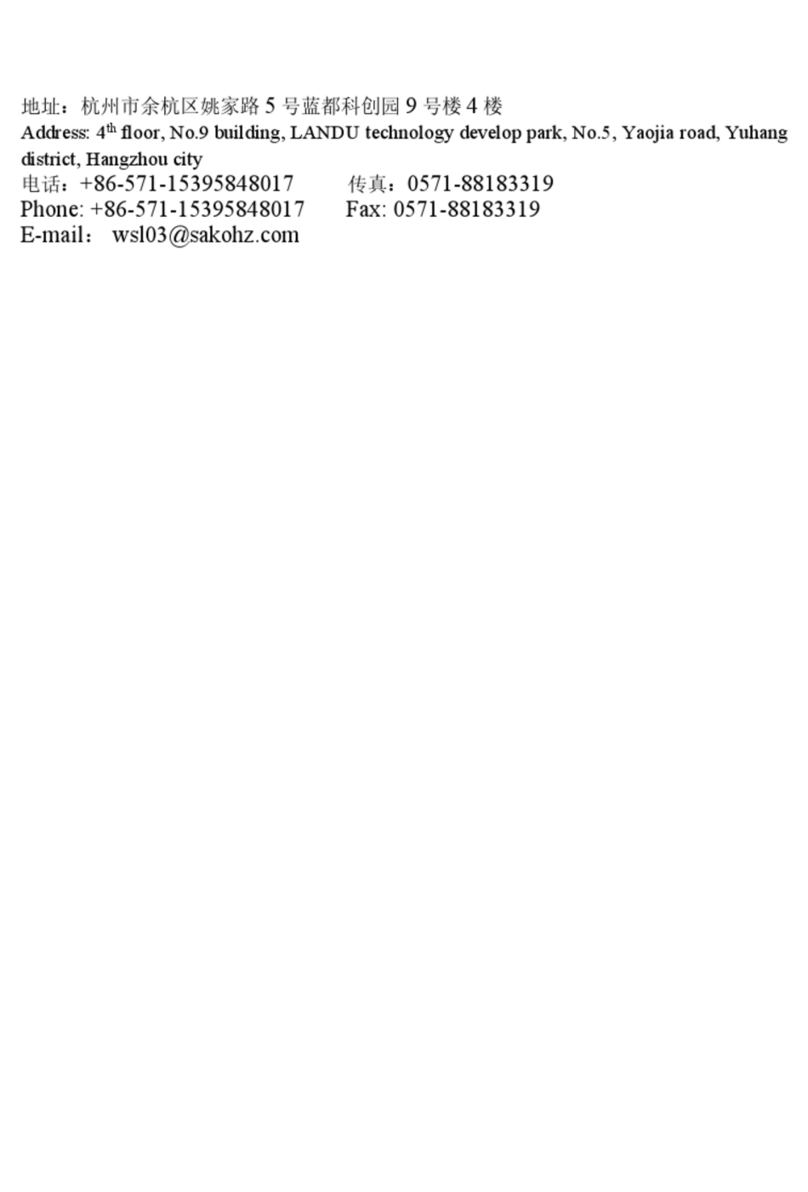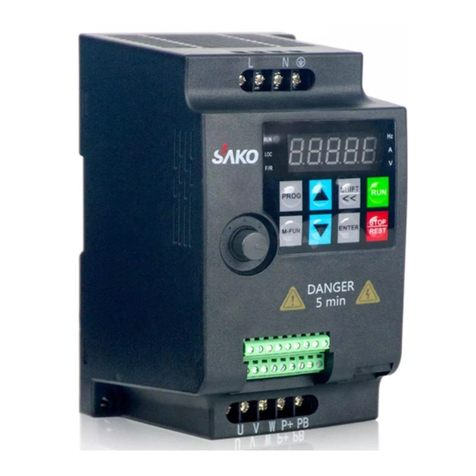
004
1.3 Technical Index and Specication
Control
Character
Frequency
Precision
Analog Input Within 0.2% of maximum output frequency
Digital Setting Within 0.01% of set output frequency
V/F Control
V/F Curve (voltage
frequency character)
Reference frequency setting 5 ~ 600 Hz,
multipoint V/F curve setting, or xed curve
of constant torque, low decreasing torque 1,
low decreasing torque 2, square torque
Torque
Compensation
Manual setting: 0.0 ~ 30% of rated output
Automatic compensation: according to
output current and motor parameter
Automatic
Current-Iimiting
and Voltage-Iimiting
During acceleration, deceleration or steady
running, detect automatically the current
and voltage of motor stator, and control it
within bounds based on unique algorithm,
minimize fault-trip chance
Senseless
Vector
Control
Voltage Frequency
Character
Adjust pressure/frequency ratio according
to motor parameter and unique algorithm
Torque Character
Starting torque:
3.0 Hz 150% rated torque (VF control)
0.5 Hz 180% rated torque (SVC, FVC)
0.05 Hz 180% rated torque (VC)
Operating speed precision in steady state:
≤ +0.5% rated synchronous speed
Torque response:
≤ 50ms VC, SVC, FVC ≤ 20ms
Motor Parameter
Self-measurement
Being able to detect parameter
automatically under static state and
dynamic state of motor, thus guarantee an
optimum control.
Current and Voltage
Restrain
Current closed-loop control, free from
current impact, perfect restrain function of
overcurrent and overvoltage
Undervoltage
Restrain
during
Running
Specially for users with a low or unsteady voltage power grid: even
lower than the allowable voltage range, the system can maintain
the longest possible operating time based on its unique algorithm
and residual energy allocation strategy





























